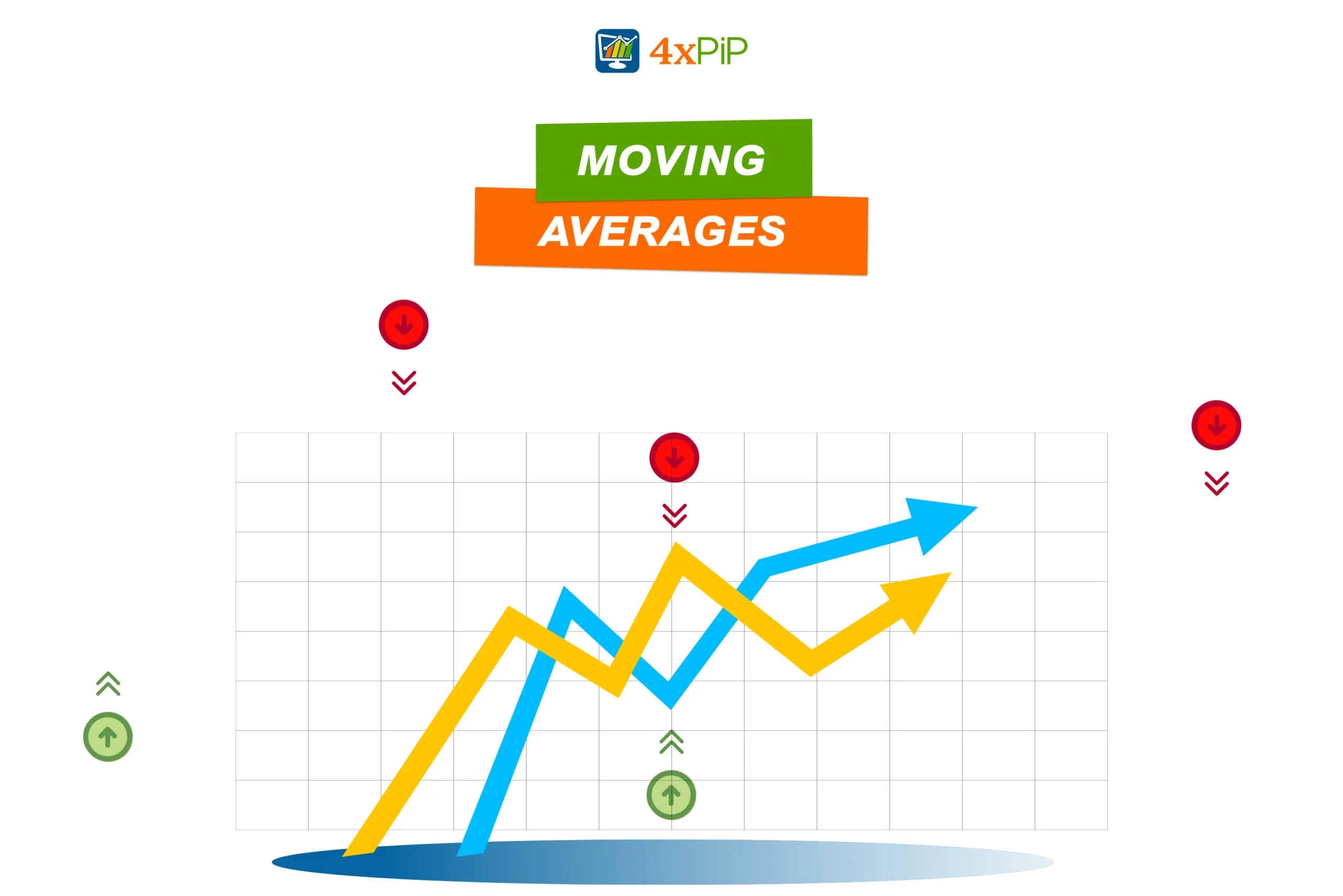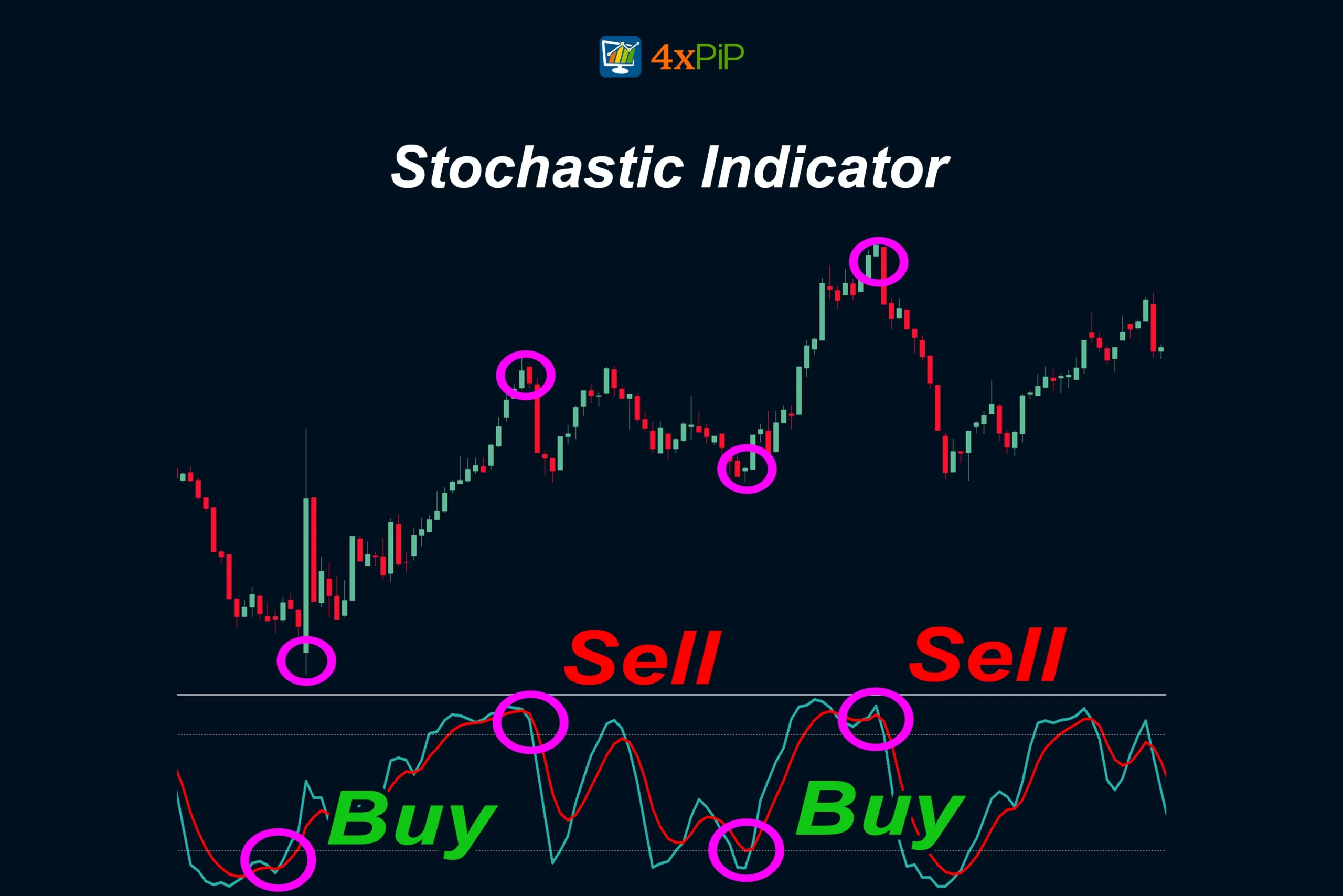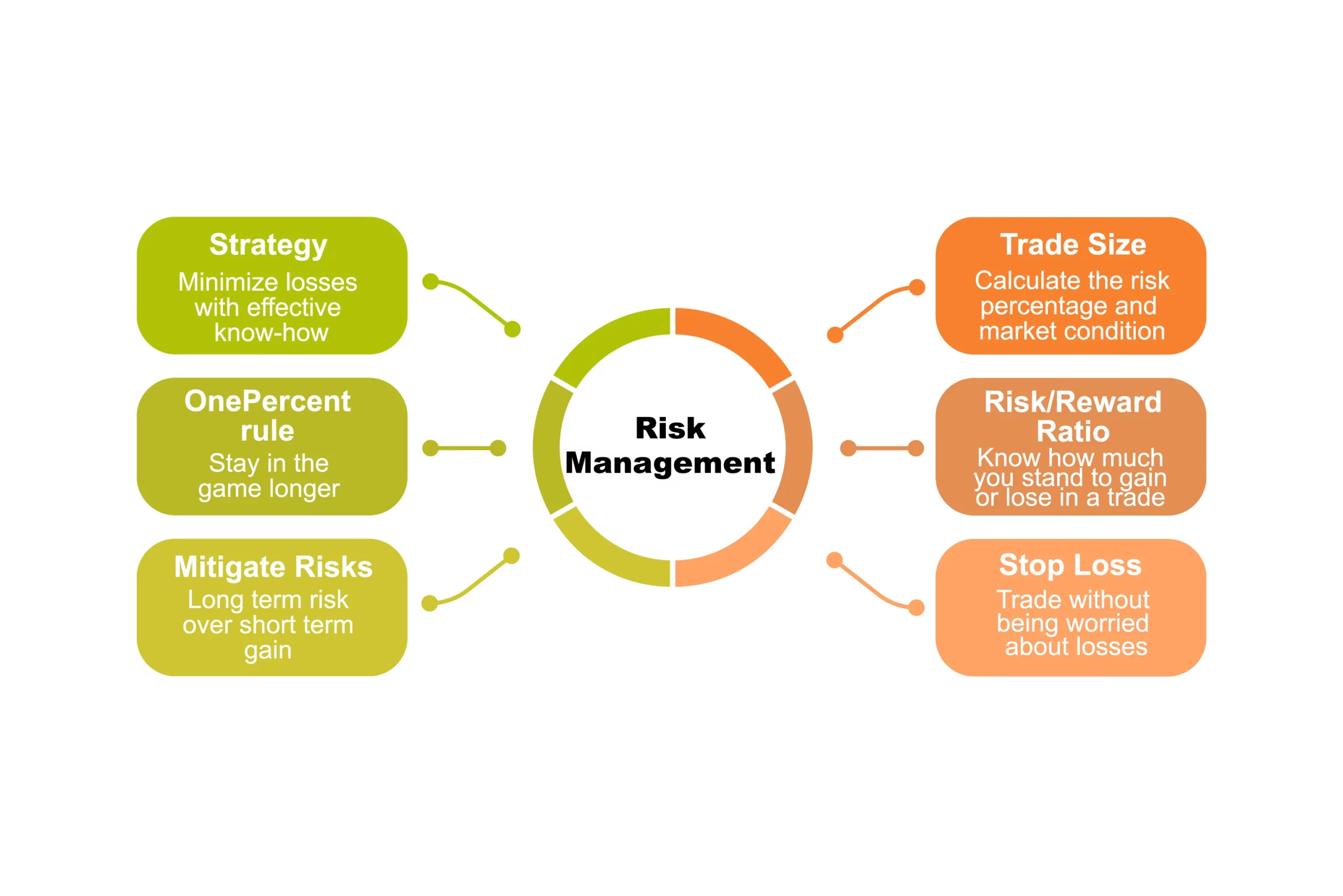Don’t know where to start?
Millions of people try their hand at trading the markets each year; however, most of them fail. The primary reason for this failure is the lack of basic skills and knowledge needed for success. To address this issue, 4xPip is going to demonstrate how stock trading works and outline what you need to be successful in this endeavor. Let’s jump in.
To be a successful trader, you must begin by understanding your own relationship with money. Ask yourself: Do you view money as a source of stress and anxiety, or do you see it as a tool for achieving your goals? Your answer to this question will significantly impact your trading success.
Once you comprehend your relationship with money, you can delve into learning about the markets. This involves gaining knowledge in technical analysis, fundamental analysis, and risk management. Technical analysis entails the study of price charts and patterns, while fundamental analysis involves examining economic data and company financial statements. Additionally, risk management is the crucial process of controlling your losses and protecting your profits.
Once you have a good understanding of the markets, you can start practicing your trading skills. This step is crucial because it allows you to test out your strategies and learn from your mistakes. You can practice trading with a demo account or with small amounts of real money.
When you feel ready to transition to trading with real money, it is important to have a well-defined trading plan. This plan should encompass your trading goals, your risk tolerance, and your entry and exit strategies. The presence of a trading plan will help you stay disciplined and make informed decisions.
Undoubtedly, trading the markets is challenging, but success is possible if you are willing to invest the time and effort required to learn the necessary skills. By following the tips outlined in this guide, you can significantly increase your chances of success in the markets.
Understand Your Relationship With Money:

One of the most important things you can do before you start trading stocks is to understand your relationship with money. This is because your attitude towards money will have a big impact on your trading decisions.
If you have a negative relationship with money, you may be more likely to make impulsive and risky trading decisions. Consequently, you may also be more prone to chasing losses and giving up easily. On the contrary, if you have a positive relationship with money, you will be more likely to make rational and calculated trading decisions. Additionally, you will be more likely to stay calm and disciplined under pressure.
Think about your childhood experiences with money. How did your parents view money? Did they talk about it openly or was it a taboo subject?
Consider your current financial situation. Are you in debt? Do you have a budget? Do you feel secure financially?
Think about your goals for the future. What do you want to achieve with your money? Do you want to retire early? Buy a house? Send your children to college?
Once you understand your relationship with money, you can start to develop trading strategies that are aligned with your values and goals. For instance, if you are risk-averse, you may want to focus on long-term investing. Conversely, if you are more aggressive, you may want to consider day trading or swing trading.
Regardless of your preferred trading style, it is important to remember that money is a tool. It can be used to achieve your goals, but it can also be a source of stress and anxiety. By understanding your relationship with money, you can start to use it in a way that is beneficial to you.
Technical Analysis in Stocks:
Technical analysis is a method of analyzing financial market data to identify patterns that can be used to predict future price movements. The analysts believe that past price movements can be used to predict future price movements, and they use a variety of tools and indicators to analyze price charts.
Some of the most common technical analysis tools include:
Candlestick charts: Candlestick charts are a type of chart that shows the opening, closing, high, and low prices of a security for a specific period. Candlestick charts can be used to identify patterns such as support and resistance levels, trendlines, and breakouts.

Moving averages: Moving averages are a type of indicator that smooths out price data to identify trends. Moving averages can be used to identify support and resistance levels, and they can also be used to generate buy and sell signals.

Indicators: Many different indicators can be used in technical analysis. Some of the most popular indicators include the Relative Strength Index (RSI), the Stochastic Oscillator, and the MACD. These indicators can be used to identify overbought and oversold conditions, and they can also be used to generate buy and sell signals.

Technical analysis can be a powerful tool for identifying trading opportunities; however, it is important to remember that it is not a perfect science. Despite its potential benefits, technical analysis can only help you make predictions, and the ultimate decision to act on those predictions lies with you.
For individuals interested in delving deeper into technical analysis, numerous resources are available online and in libraries. Additionally, brokerage firms and investment training companies often offer technical analysis courses to further enhance your understanding of this analytical approach.
Fundamental Analysis of Stocks:

Fundamental analysis is a method of evaluating a security by analyzing its underlying fundamentals. This includes factors such as the company’s financial performance, its competitive landscape, and the economic environment. Fundamental analysts believe that the price of a security should reflect its intrinsic value, and they use fundamental analysis to identify undervalued or overvalued securities.
Some of the most common fundamental analysis tools include:
Financial statements: Financial statements are a company’s financial reports, and they provide a wealth of information about the company’s financial performance. Fundamental analysts use financial statements to analyze a company’s profitability, liquidity, and debt levels.
Valuation ratios: Valuation ratios are used to compare a company’s stock price to its underlying fundamentals. Some of the most common valuation ratios include the price-to-earnings ratio (PE ratio), the price-to-book ratio (P/B ratio), and the dividend yield.
Industry analysis: Fundamental analysts also consider the company’s competitive landscape when evaluating security. They look at the company’s market share, its competitive advantages, and the threats posed by new entrants and substitutes.
Economic analysis: Fundamental analysts also consider the economic environment when evaluating security. They look at factors such as interest rates, inflation, and economic growth.
Fundamental analysis can be a powerful tool for identifying undervalued or overvalued securities; however, it is important to remember that it is not a perfect science. Like technical analysis, fundamental analysis can only assist you in making predictions, and the responsibility to act on those predictions ultimately rests with you.
Risk Management in Trading:
Risk management is one of the most important aspects of stock trading. It is important to understand the risks involved in trading and to put in place strategies to mitigate those risks.

Some of the most common risks involved in stock trading include:
Market risk: This is the risk that the overall market will go down, causing your investments to lose value.
Individual stock risk: This is the risk that a particular stock will go down, causing you to lose money.
Liquidity risk: This is the risk that you will not be able to sell your stocks quickly when you need to.
Volatility risk: This is the risk that the price of a stock trading will fluctuate wildly, causing you to lose money.
There are several things you can do to manage risk in your stock trading:
Do your research: Before you buy any stock, it is important to do your research and understand the risks involved.
Diversify your portfolio: This means investing in a variety of stocks, which can help to reduce your risk.
Use stop-loss orders: A stop-loss order is an order to sell a stock if it falls below a certain price. This can help you to limit your losses if a stock goes down.
Take profits: When you make a profit on a stock, it is important to take some profits off the table. This can help you to protect your gains and reduce your risk.
Be patient: Stock trading is a long-term game. Don’t expect to get rich quickly. Be patient and focus on managing your risk.
If you are willing to put in the time to learn about risk management and to put in place strategies to mitigate risk, you can significantly increase your chances of success in the stock market.
Practice Trading Skills via Demo Trading Account:
One of the best ways to learn how to trade stocks is to practice. You can practice with a demo account or with small amounts of real money.
When you are practicing, it is important to use the same strategies that you would use when you are trading with real money. This will help you to develop your trading skills and to identify any potential weaknesses in your trading plan.
Here are some tips for practicing your trading skills:
Start with a small amount of money: This will help you to learn the ropes and to manage your risk without risking too much money.
Use a demo account: A demo account is a free way to practice trading stocks without risking any real money. This is a great way to test out different strategies and to see how they work in the real world.
Set realistic goals: When you are practicing, it is important to set realistic goals. Don’t expect to become a millionaire overnight. Start with small goals, such as making a profit of 1% or 2% on each trade.
Don’t be afraid to make mistakes: Everyone makes mistakes when they are learning. Don’t let this discourage you. Just learn from your mistakes and move on.
If you follow these tips, you can practice your trading skills and increase your chances of success in the stock market.
What is Autotrading?
Autotrading involves automatically placing buy and sell orders based on an underlying system or program. The system or program executes these orders when it meets the trade conditions.
For auto trading, you can automate your strategies by programming indicators and Expert Advisors (EA).
Moreover, 4xPip is a leading store built for automated trading on the MT4 and MT5 platforms. Their products include indicators and Expert Advisors (EA) designed for MetaTrader 4 and MetaTrader 5, covering financial markets such as forex trading, crypto trading, commodity trading, stocks, indices, etc. Their trading bots make intelligent decisions based on trading analysis, candlestick patterns, price charts, and market trends. The auto-trading EA knows when to open a trade and how to maximize profit.
Summary:
This comprehensive blog provides a roadmap for individuals looking to venture into stock trading, addressing key aspects such as understanding one’s relationship with money, technical and fundamental analysis, risk management, and the practice of trading skills. It emphasizes the importance of developing a well-defined trading plan, tailored to individual goals and risk tolerance. The blog introduces the concepts of technical and fundamental analysis, shedding light on their tools and methods. Risk management is highlighted as a crucial aspect, with practical strategies for mitigating market, individual stock, liquidity, and volatility risks.
The importance of patience, research, and continuous learning is emphasized throughout. Additionally, the blog touches on the concept of autotrading, where buy and sell orders are automated based on predefined systems. The mention of 4xPip as a leading store for automated trading tools adds a practical and innovative dimension to the discussion. Overall, the blog serves as a comprehensive guide for both beginners and experienced traders, offering valuable insights, practical tips, and resources for success in the dynamic world of stock trading.





